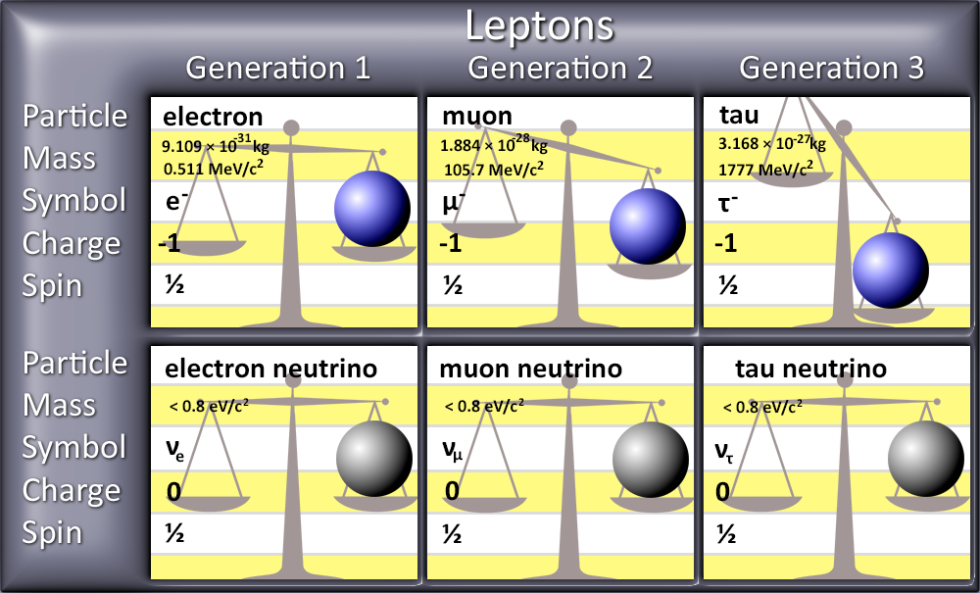Leptons represent a fundamental class of elementary particles within the Standard Model of particle physics. Their significance extends far beyond mere categorization; they embody intricate concepts that resonate throughout the universe. In examining the question, “Are leptons thought to be fundamental particles?” we uncover a rich tapestry of physical phenomena, historical context, and theoretical implications that merit exploration.
At the core of the inquiry lies the fundamental question of what constitutes a “particle.” In the realm of particle physics, elementary particles are defined as indivisible entities that are not composed of smaller constituents. Leptons, such as electrons, muons, and tau particles, alongside their corresponding neutrinos, are categorized as fermions, possessing half-integer spin. This categorization is pivotal as it governs the particles’ statistics and interactions, laying the groundwork for our understanding of the material universe.
One of the primary reasons leptons are deemed fundamental is their lack of substructure. Experimental evidence from high-energy collisions, such as those conducted at the Large Hadron Collider (LHC), reveals no observable divisions within leptons. This notion challenges prior paradigms, where particles were sometimes postulated to be composites. As a result, leptons are acknowledged as point-like particles, indicating that they exist without measurable size or internal dimensions, effectively rendering them fundamental in nature.
The concept of charge further solidifies the status of leptons as fundamental particles. Each lepton carries an inherent electric charge, crucial to their interactions with other particles, particularly through the weak and electromagnetic forces. For instance, the electron, a well-studied lepton, possesses a negative electric charge, while its neutrino counterpart is neutral. This charge contributes significantly to the cohesive forces binding atoms together and influences how matter behaves at quantum levels.
Leptons also play a critical role in mediating weak interactions, which are pivotal in processes like beta decay. In this process, an unstable nucleus emits a beta particle, which is often an electron produced via the transformation of a neutron into a proton. The associated neutrino, emitted alongside the electron, is a manifestation of lepton dynamics. This weak force interplay is vital for nuclear reactions that fuel stars, including our sun, showcasing the practical implications of leptons beyond theoretical constructs.
Moreover, leptons exhibit a unique property known as lepton flavor, which encompasses electron-type, muon-type, and tau-type particles. Each flavor is associated with its respective neutrino and is conserved during interactions. The fascinating process of flavor oscillation, observed in neutrinos, suggests that these particles can transition among flavors, a phenomenon that adds layers of complexity to our understanding of foundational physics. Such behaviors pose questions about the underlying mechanisms governing these transformations and compel physicists to rethink established theories.
The study of leptons is inextricably linked to the pursuit of unifying theories in physics. The quest to merge quantum mechanics with general relativity remains one of the foremost challenges in contemporary physics. Leptons, due to their distinct roles in particle interactions, provide insights into potential grand unified theories (GUTs), which aim to unify the fundamental forces of nature. Within this quest, leptons stand as indispensable actors in theoretical frameworks striving to elucidate the fundamental foundations that govern the cosmos.
Furthermore, the historical context surrounding the discovery of leptons offers additional layers to their compelling nature. The electron, first identified in the late 19th century by J.J. Thomson, revolutionized scientific thought. Subsequent discoveries, including those of muons and tau particles in the 20th century, contributed to the evolution of atomic theory. These historical milestones signify the progressive unraveling of the particle zoo, highlighting the intellectual curiosity that drives the field of particle physics. The chronology of leptons’ discovery reflects a gradual shift in human understanding of atomic structure and the fundamental constituents of matter.
Theoretical advancements, particularly within quantum field theory, further underscore the importance of leptons. Quantum electrodynamics (QED) elucidates the interactions of charged leptons with photons, providing a mathematically rigorous framework to describe electromagnetic interactions. The advancement of QED exemplifies how leptons serve as a crucial medium through which theoretical physics bridges abstract mathematical formulations with observable phenomena in the natural world.
In conclusion, the classification of leptons as fundamental particles emanates from a confluence of experimental validation, theoretical underpinnings, and historical evolution. Their indivisible nature, interaction properties, and significance in various physical processes collectively affirm their foundational status in the cosmos. Understanding leptons not only captivates the physicist’s imagination but also invites profound philosophical reflections on the essence of matter and the universe itself. As our knowledge continues to expand, the enigmatic world of leptons will undoubtedly persist as a subject of fascination, inspiring future generations of scientists to delve deeper into the mysteries of the universe.












